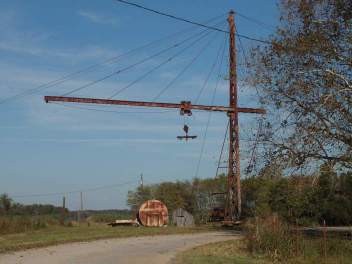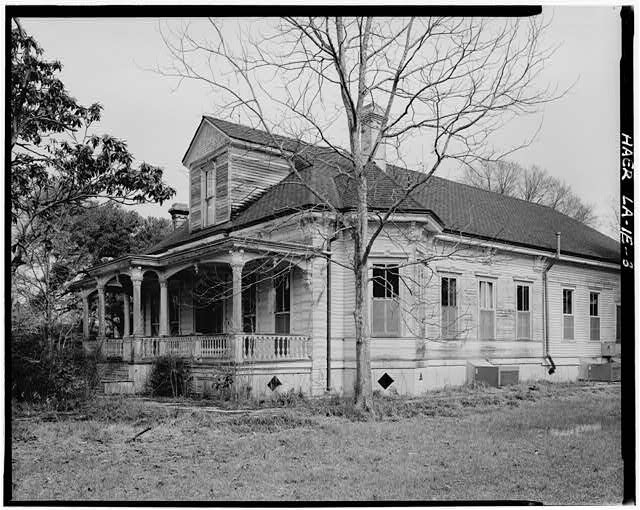Laurel Valley Plantation
Introduction
Text-to-speech Audio
Laurel Valley Plantation Slave Village, located in Thibodaux, Louisiana, is one of the largest surviving sugar plantations in the South. Purchased in 1832 by Joseph W. Tucker, the Laurel Valley Plantation has been the site of Civil War action, the prosperity boom from 1890-1924, and now operates as a museum complex that emphasizes the experiences of the people who were enslaved here.
Images



Laurel Valley Store

Sugar Crane


J.W. Lepine tractor

Original House burned by Union Soldiers

Sugar Mill

Backstory and Context
Text-to-speech Audio
The land for the Laurel Valley Plantation originally belonged to Etienne Boudreaux. It was given to him by a land grant in 1783. In 1832, the land was purchased by Joseph W. Tucker who brought his fifteen-year-old wife and twenty-two slaves with him. In addition to the land owned by Boudreaux, he also purchased additional surrounding land.
By Tucker’s death in 1852 from cholera, he enslaved 162 people. His sons Joseph Pennington and William Pleasant tried to maintain the property together. During the Civil War, the main house of the Laurel Valley Plantation was burned down by Union soldiers. Joseph took over sole maintenance of the property in 1869. Ownership of Laurel Valley Plantation changed in the 1870s when it was sold to Zuberbier and Behan of Lafourche Parish. Soon after this purchase, it was sold on January 12, 1893, at public auction, where it was bought by J.W. Lepine and Frank Barker.
By the time Lepine and Barker purchased Laurel Valley Plantation, it consisted of 3,023 acres of land. During his tenure at the plantation, Lepine invented a tractor that could plant faster than solely using mules. In 1903, Barker died and left sole ownership of the property to Lepine. After his death, his son J. William Lepine took over management of the plantation. At the height of the prosperity boom there was a village consisting of 450 workers and 105 structures, 60 still standing. The buildings included a schoolhouse, a Blacksmith shop, a sugar mill, a store, slave quarters, and outhouses. There were fifteen miles of train tracks that were built on the plantation to move sugar cane from the fields to the mill. The plantation store was built in 1905 and stands today as a museum. There is also forty-three miles of canals and ditches that drain excess water from the plantation and deposit it over a protective levee. Currently, the Laurel Valley Plantation sits on over 5,000 acres of land. Laurel Valley Plantation has also been in several Hollywood movies, such as Interview with the Vampire and A Lesson Before Dying.
This site has occasionally been cited as the location of the 1887 Thibodaux Massacre due to the appearance of a photo of this site within an article. The photo was intended to demonstrate a typical cabin at the time of the massacre. After attempting to start a union to negotiate better wages, white militias massacred around sixty African American farm workers. The massacre was not centered on one single plantation and several parishes saw repeated episodes of racial violence. The worst instances of violence in 1887 occurred in Lafourche Parish, St. Mary Parish, and Terrebonne Parish. The violence was part of a consolidation of power of white landowners. While the cabins that remain on this plantation are not directly connected to the massacre, they serve a reminder of the poverty and powerlessness of the Black families the lived and worked these lands both before and after the Civil War.
Sources
Kingsley, Karen. Laurel Valley Plantation, 64 Parishes. Accessed October 19th 2020. https://64parishes.org/entry/laurel-valley-plantation.
Terry, Debbie S. Laurel Valley Plantation, Genealogy Trails History Group. Accessed October 20th 2020. http://genealogytrails.com/lou/lafourche/laurel_valley.html.
Schermerhorn, Calvin. The Thibodaux Massacre Left 60 African-Americans Dead and Spelled the End of Unionized Farm Labor in the South for Decades, Smithsonian Magazine. November 21st 2017. Accessed October 19th 2020. https://www.smithsonianmag.com/history/thibodaux-massacre-left-60-african-americans-dead-and-spelled-end-unionized-farm-labor-south-decades-180967289/.
http://hauntednation.blogspot.com/2016/10/laurel-valley-village-plantation.html
http://genealogytrails.com/lou/lafourche/laurel_valley.html
http://hauntednation.blogspot.com/2016/10/laurel-valley-village-plantation.html
http://genealogytrails.com/lou/lafourche/laurel_valley.html
https://www.facebook.com/pg/LaurelValley/photos/?ref=page_internal
http://genealogytrails.com/lou/lafourche/laurel_valley.html
http://genealogytrails.com/lou/lafourche/laurel_valley.html
https://www.facebook.com/pg/LaurelValley/photos/?ref=page_internal
